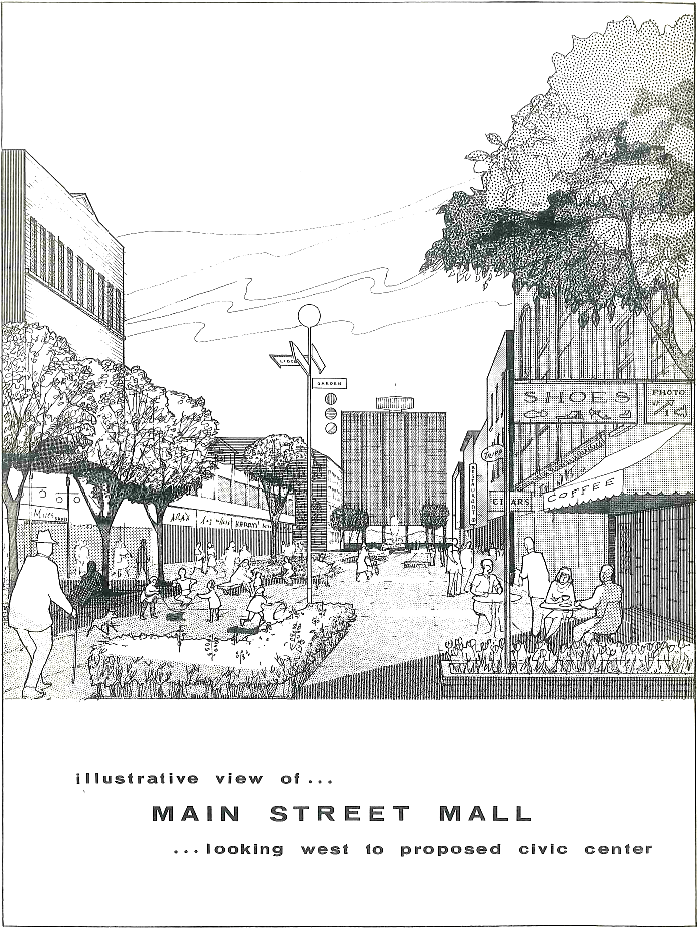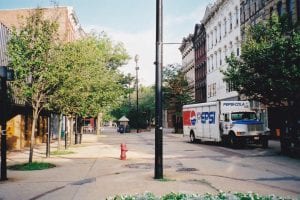Twenty years ago the City of Poughkeepsie debuted a Comprehensive Plan meant to be a road map for revitalization. If you look at Poughkeepsie today you can see, broadly, how well or poorly the City followed its own plan. Look around and there are indeed pockets of vitality — but also far too little of it. To spoil the plot, Poughkeepsie veered from the plan it devised for its own rescue, and it did so comprehensively. This three-part post seeks to grade these efforts. The first will evaluate Housing, Zoning and Transportation. The second will evaluate Cultural Resources, Parks and Recreation, and Historic Resources. The third will evaluate Main Street Revitalization, the Cottage Street Business Park, and Waterfront Strategies.
At the end of the 1998 City of Poughkeepsie Comprehensive Plan there is a list of initiatives listed for each of its recommended strategies, as well as a rating of their priority. The list also indicates if the initiative is an immediate goal, a short-term goal, a mid-range goal, or a long-term goal. It has been 20 years since the plan was adopted, enough time to have some impact. So we decided to grade the city’s performance. To do this we assigned 5 points to high priority initiatives, 3 points to medium priority, and 1 point to low priority. This post will focus on Main Street Revitalization, the Cottage Street Business Park, and Waterfront Strategies. (Editor’s Note: The BenCen’s entire series How the City of Poughkeepsie Fell Short, with three prior chapters, is now live and can be explored in depth here.)
 Revitalize Main Street:
Revitalize Main Street:
Rezone downtown core:
Along with many other zoning recommendations, this did not occur. 0/5
Reopen Main Street:
In November of 2001 the Main Mall was reopened. Since then it has seen a marked improvement. 5/5
Initiate Themes:
The intentions of this initiative have partially been realized, more due to market forces than to purposeful effort. There is a thriving restaurant scene on Main Street, and certainly ethnic specialty shops. Coffee shops have come and gone, and come again. Book stores and antique shops have not gotten any real traction, and local outreach offices for area colleges have not come to fruition. There is also no current student housing, or amenities focusing on local student clientele on Main Street. 2/5
Programmatic controls:
Poughkeepsie has made some progress here, just not formally, as the plan intended. Facades have been improved, the police have foot patrols on Main Street, the city cleans, the streets are swept, and the garbage is collected. The important thing is that the improvement is real, regardless of how it has been achieved. 5/5
 Enforce design guidelines:
Enforce design guidelines:
Design guidelines have been established, and are being enforced. The Kearney building is a good example of this. 3/3
Plan for arterials:
Kevin Dwarka and the Pace land use land center {Is this the right link? It’s nice to clue the reader in if they’re unaware: http://dutchessny.gov/CountyGov/Departments/Planning/intro-to-land-use.pdf ] created a plan for the arterials a few years back. It has not come to fruition yet, but a plan was created. 3/3
Main Street Recap: This section scored an 18/26, and given the enormity of the project to open up Main Street again, this score should probably be higher. Main Street may not have been restored to the commercial and cultural center that it once was, but it is vastly improved since the plan was adopted.
Cottage Street Business Park:
Upgrade infrastructure:
The primary recommendation for infrastructure upgrades focused on increasing the stormwater system capacity in concert with the projected increase of impermeable surfaces, and enhancing sewer, and water supply capacities to meet the needs of new development. Poughkeepsie failed to make these improvements, save perhaps to increase water supply capacity as a result of general upgrades. Nor did the desired development occur. It is possible that upgrades were to be considered in the planning process for new development, and since new development did not occur, the upgrades were not considered.
Additionally there is a small section on an incredibly underutilized resource in the City of Poughkeepsie, and a real missed opportunity. The 1998 plan mentions the fiber optic communications networks that run through the north side of the city. These backbones were owned by AT&T and Bell Atlantic, and the trunk lines run through the proposed business park. There was a real opportunity at the time to develop this area for IT companies. Poughkeepsie could have offered datacenter interconnects that simply could not be found in other places. Much later, this fiber optic infrastructure allowed Poughkeepsie to be one of the first municipalities where Verizon would roll out FiOS Internet and television. Sadly the opportunity was missed. 0/5
New access to city-owned parcel:
It is difficult to assess which parcel this refers to, but the Conrail spur that the plan mentions is now the Dutchess Rail Trail. It stands to reason that new roads were not constructed to offer better access to the proposed business park for tractor trailers. 0/5
Establish truck route:
No truck routes were established. 0/5
Modify zoning to industrial park and include performance standards:
The zoning was not modified, and performance standards were not put in place. 0/5
Create new truck route:
This initiative was to create a transportation route for shipping through the north side by either enlarging an already established truck route, or through the construction of a new road. This did not occur. 0/3
Cottage Street Recap:
There is not now, nor has there ever been, a Cottage Street Business park. This section of the city was in rapid decline throughout the 1980’s and 1990’s due to the end of freight rail (because of the 1974 bridge fire), the economic fallout in the region after the IBM layoffs, and the general decline of manufacturing in small cities. Poughkeepsie planned to intervene, but never did. 0/18
Waterfront Strategies:
Develop a working waterfront:
This is a difficult initiative to grade as it encompasses so many elements. The comprehensive plan suggests that while public recreation and accessibility is important, a mix of commercial activities was also needed for waterfront development. Advancements were made in both areas. Waryas Park and promenade was a vast improvement on the public recreation side of things, while Shadows on the Hudson, the Grandview, the marina, and the Ice House are commercial sites that have been developed. The city did not achieve the waterfront it envisioned, but it did make progress towards a working waterfront. 3/5
Harbor Management:
The plan calls for a Harbor Manager, a police sub-station, improved lighting, and other improvements to the harbor. The city does have a boat launch, and improved lighting. Given the current use of the site, a Harbor Manager is probably unnecessary, and police patrols of the area seem to be adequate in preventing vandalism and maintaining a safe environment. 2/3
Enhance transportation linkages – Hoffman Street Bridge:
The Hoffmann Street Bridge improvement was completed, and serves as access to Water Street. 3/3
Waterfront Recap: Poughkeepsie scored 8/11 in this section. Over the past 20 years the waterfront has undergone a large transformation. The vision the plan had for the waterfront has not yet been realized, and there is much work still to be done, but the waterfront continues to be a focus of the city.
What’s The Final Score?
Overall Poughkeepsie did not score terribly well. It scored 61/148, or 41%. Large areas of the plan, notably a comprehensive zoning overhaul and the Cottage Street Business Park, were unaddressed. Other elements, such as the outdoor amphitheater, may have been added out of convenience. Given how long has passed since the plan was enacted in many ways it is unfair to hold current policy makers responsible for failing to bring the comprehensive plan to fruition, nor is it fair to hold the current city leaders accountable for complying with a plan that is well past its expiration date. Too much time has passed, and the world has changed. The current comprehensive plan is so outdated that it has little relevance to planning that is taking place in the city today, and that is a big problem. The solution, however, is not the piecemeal approach to planning that is the current norm. Planning projects need to be evaluated holistically – in the context of the overarching vision of the city – and evaluated on the basis of if they will assist or hinder the city in the materialization of that vision.
The final post in this series will explore the need for a new comprehensive plan, and discuss elements that the city may want to consider including.

0 Comments
1 Pingback